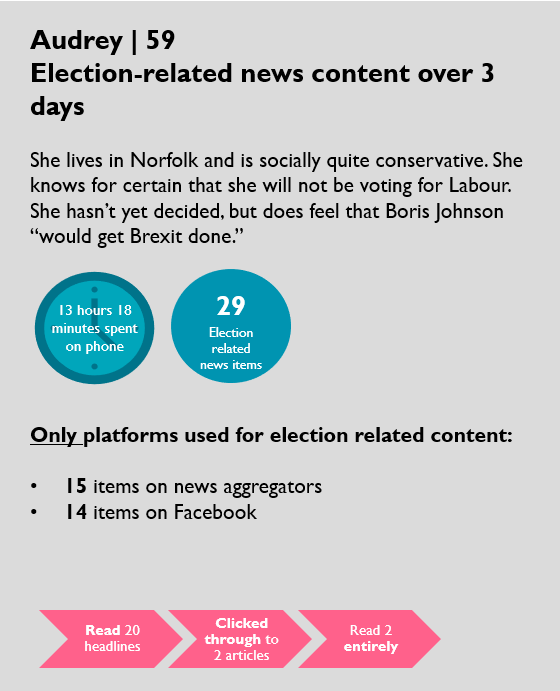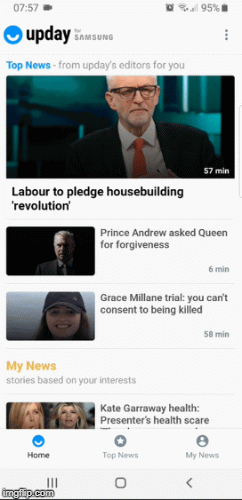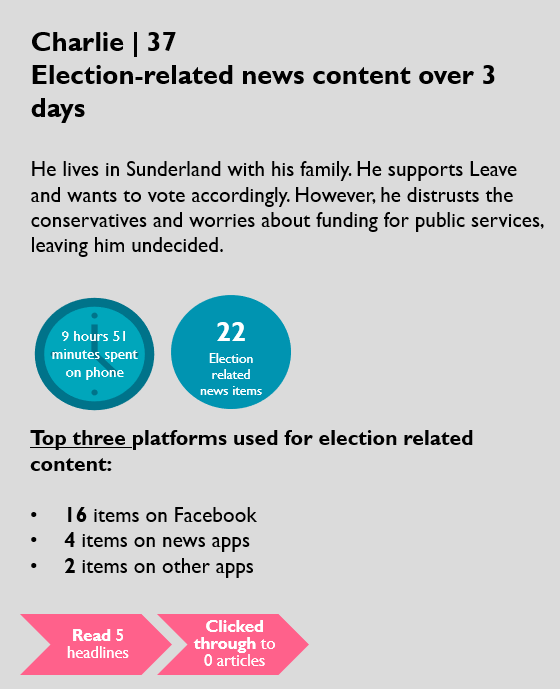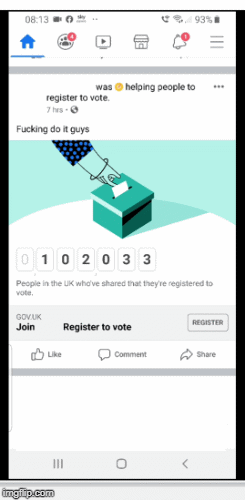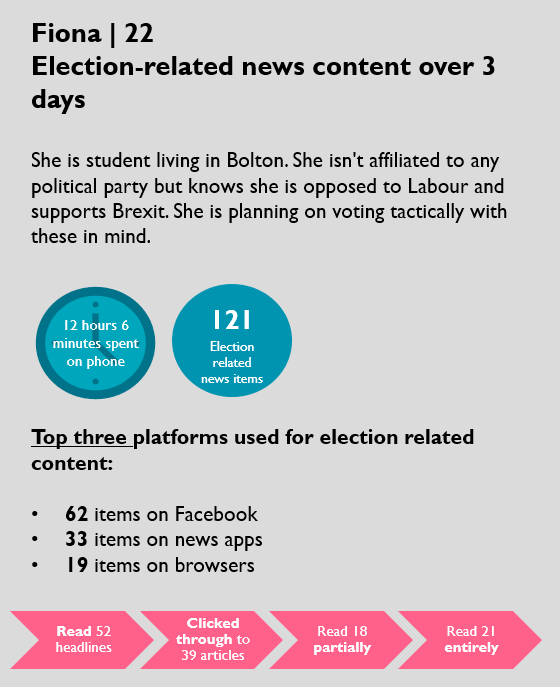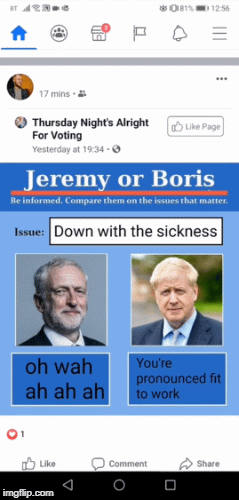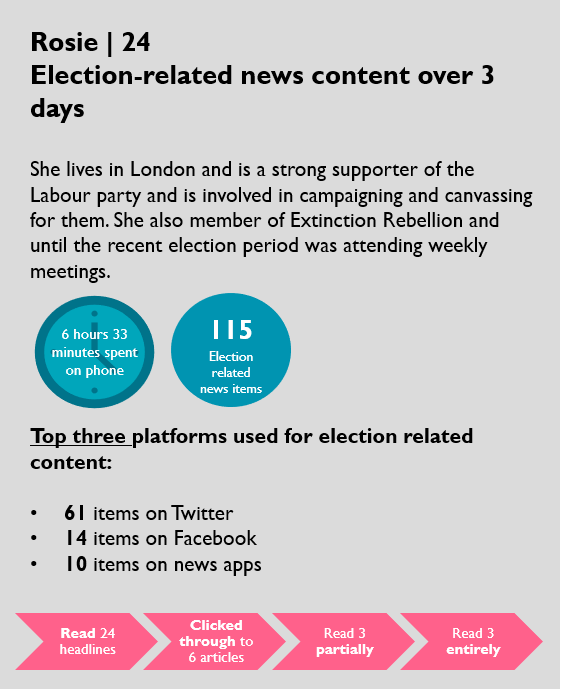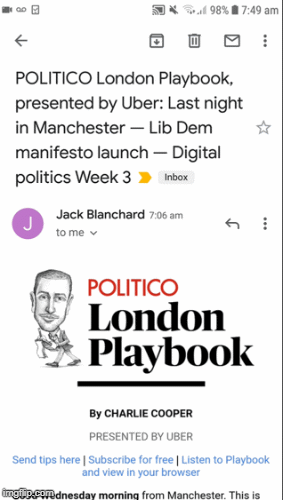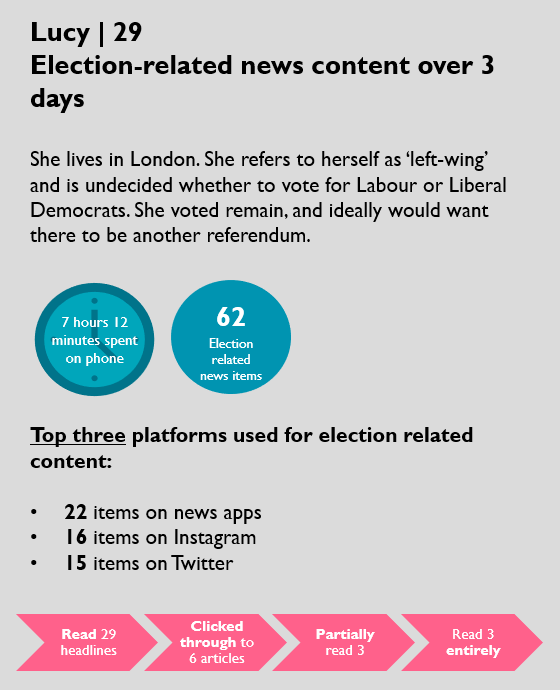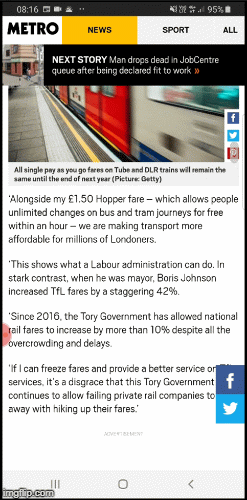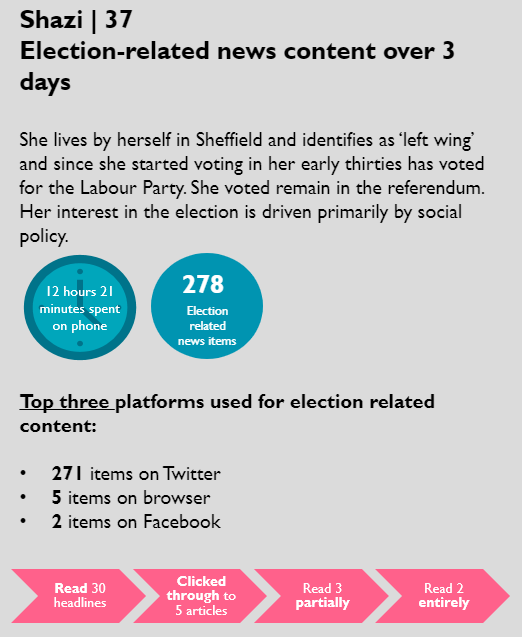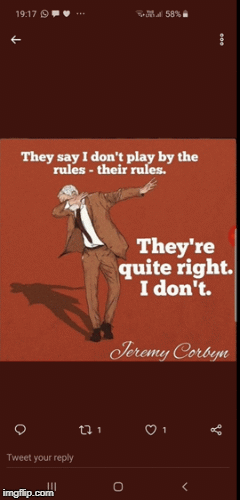Case studies
This is the fourth of four blogs based on self-funded research into how smartphones are influencing our view of the UK elections. Click on the introductory blog for an overview of the project, the elections insights blog to see what came out of the study, and the research methods blog to learn how we were able to ‘see’ largely private smartphone behaviours . For further reading, the Guardian has published a lengthy analysis of our research.
For this project we deliberately sought out people with a range of political viewpoints. We wanted to see what kind of news they were receiving on their smartphones, and via which platforms. But in the process it became clear that another area of analysis was proving interesting: how exactly are they engaging with the information they receive, and does this help or hinder the goals they set in viewing information?
It’s forced us to reflect on how we consume news, but we also feel it could provide a useful point of reflection for anyone who follows election news via their smartphones. Like the six respondents, do you have a variety of motivations for viewing particular pieces of news? Are you even aware that you have certain news-related goals?
Sometimes the people we researched wanted to deepen their understanding of a particular issue, and in the process they read a range of sources from both sides of the political spectrum; other times people consumed information that they could then use to prove a view they held, and to disprove contrary views. The first ‘goal’ saw people engage in a more balanced and holistic way with information, while the second saw them cherry pick information to use for politically-motivated ends.
It was also evident that, when it came to how people consumed news, quantity often trumped depth. The ratio of headlines seen to content actually read was low. Do you know how many articles you actually read, versus headlines you skim through?
Below are the profiles of our six participants. The images of their screen record show just how one-sided news consumption can be, while the ratios of headlines seen to content read indicates the depth at which they engaged with election-related news. Perhaps, while reading, you can reflect on how this compares with your news consumption behaviour.

